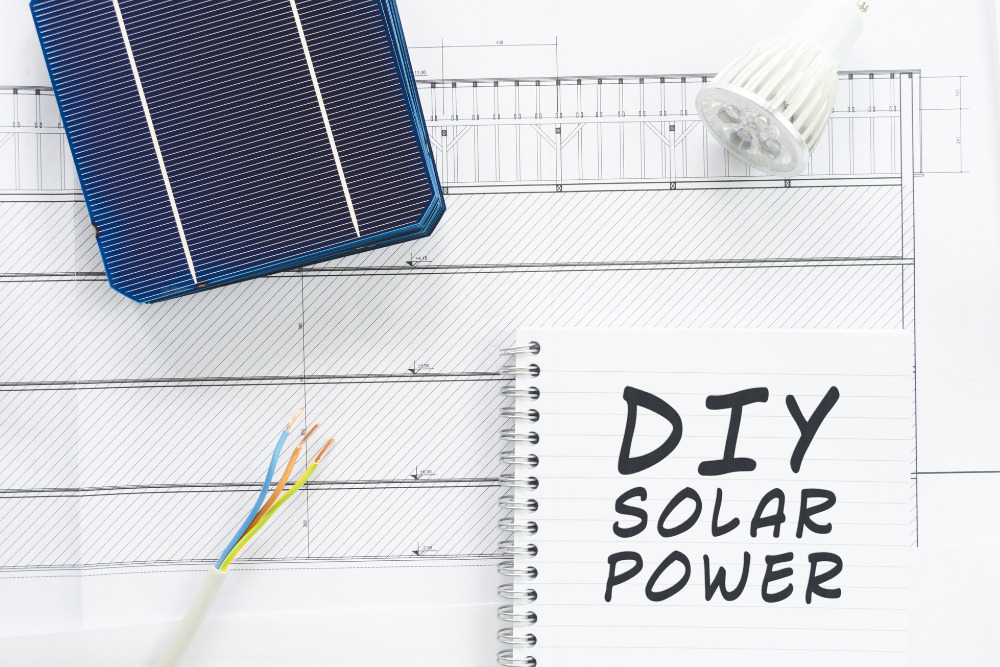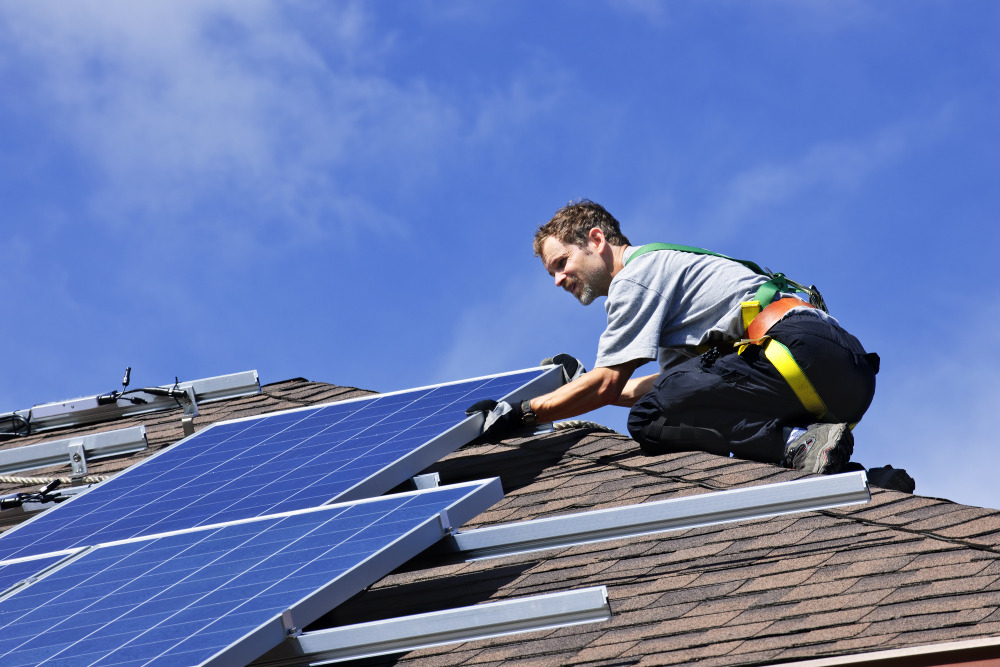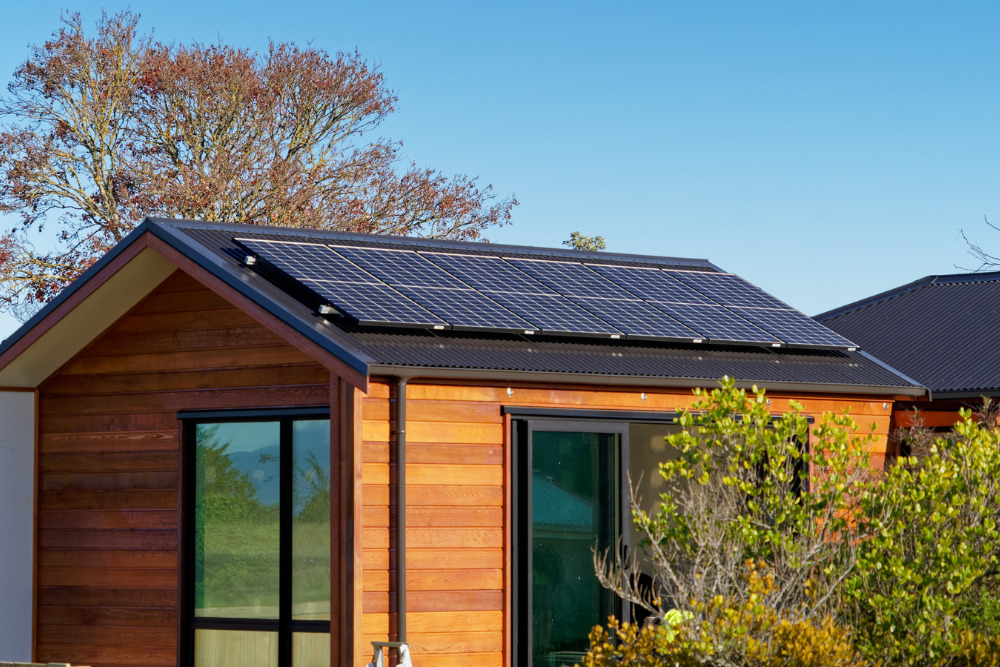
DIY solar panel installation has emerged as a practical solution for homeowners considering renewable energy, offering financial savings and environmental benefits.
Solar power has become an ever-more popular and cost-effective way for homeowners to generate their own clean energy.This article is a guide to help you embark on your DIY solar project, providing essential renewable energy know-how and insights into creating your own solar power system.
Can You Install Your Own Solar Panels?
Yes, it is possible for individuals to install their own solar system.
DIY solar panel installation has gained traction among homeowners who want more control over their energy generation and to reduce their reliance on traditional energy sources.
However, it's important to note that installing solar panels requires a certain level of technical knowledge, as well as adherence to local regulations and safety guidelines.
Before embarking on the DIY route, it is important to research and understand the process thoroughly and consult with a professional solar installer or an electrician with experience in solar installations.
Pros And Cons Of DIY Solar
Pros of DIY Solar:
- One of the primary advantages of DIY solar panel installation is the potential for significant cost savings. By eliminating installation labor costs, you reduce the overall expenses associated with going solar.
- Installing your own solar panels provides a valuable learning opportunity. You gain hands-on experience and knowledge about solar technology, electrical systems, and sustainable energy.
- DIY projects allow you greater control over the solar installation process. You can customize the system size, component selection, and placement according to your specific energy needs, available space, and preference.
- Successfully completing a DIY solar installation brings a sense of accomplishment and pride in being self-sufficient and environmentally conscious.

Cons of DIY Solar:
- Installing solar panels requires a certain level of technical knowledge, including electrical wiring, mounting, and system design. Lack of experience or expertise leads to potential errors, safety hazards, or poor performing systems.
- DIY solar panel installation is time-consuming and labor-intensive. It involves extensive research, planning, and physical work, which may not be suitable for everyone, particularly those with limited time or physical capabilities.
- Professional solar installations typically come with warranties and access to customer support. DIY installations may have limited warranty coverage or access to assistance, which is a disadvantage if any issues arise.
- Solar installations are subject to permits, safety codes, and local regulations. Before diving into the installation, conducting a zoning and permit check is important to ensure compliance with local laws. DIY installers must ensure they comply with all legal requirements, which are complex and time-consuming without professional guidance.
Choosing A Solar Panel System: Off-Grid Or Grid-Tied
When it comes to DIY solar panel installation, there are two primary types of systems: off-grid and grid-tied.
An off-grid system operates independently, is not connected to the utility grid, and requires a battery bank for energy storage.
A grid-tied system remains connected to the utility company, providing a backup in case your solar system doesn’t generate enough power and allowing excess energy to be sent back to the grid for credits or compensation.
For off-grid solar projects, a battery backup system is essential to store excess energy generated during the day for use during the night or periods of low sunlight. A solar battery serves as a reservoir for self-generated power, ensuring a continuous and reliable energy supply. This is particularly advantageous for off-grid systems in remote locations, cabins, RVs, or those seeking complete energy independence—which are typically those considering DIY solar.

Mounting Options: Roof Mount Or Ground Mount
DIY solar installations offer flexibility in terms of mounting systems. Roof mount and ground mount are the two main options.
Roof-mounted solar arrays are popular due to their space-saving nature, making them an excellent choice for residential installations.
Ground mounts are ideal for those with ample space or when roof mount is not feasible. They are commonly used in off-grid solar projects or larger installations.
Is It Cheaper To Install Your Own Solar Panel System?
Installing your own solar panel system is potentially cheaper than hiring professional installers, but it depends on various factors and individual circumstances.
Here are some key aspects to consider when measuring the cost-effectiveness of a DIY solar installation:
- DIY projects save money on installation costs since you won't be paying professional labor fees. However, you need to account for the cost of equipment, permits, and any specialized tools or materials required for the installation.
- You can avoid paying for professional services if you have the necessary skills and knowledge. However, if you lack experience or encounter difficulties during the installation, you may need to hire an expert for assistance.
- The complexity and size of the solar panel system you plan to install will affect the cost. Larger and more intricate designs require the expertise of professional solar companies and equipment, making a DIY approach more challenging and potentially less cost-effective.
- DIY installations require significant time and effort, which should also be considered as part of the overall cost. Assess whether you have the availability and willingness to invest the necessary time to research, plan, and complete the installation.
- Investigate available tax incentives, solar tax credits, and rebates for solar installations in your region. These financial benefits significantly reduce the upfront costs of your project and contribute to quicker returns on investment. Enter your zip code in the Database of State Incentives for Renewables & Efficiency to see all available incentive programs in your area.
How Hard Is It To Install Your Own Solar Panels?
Installing your own solar panels is a moderately challenging task, depending on your level of technical expertise and experience with electrical work.
While DIY solar panel installation is feasible for many individuals, it is important to recognize your own limitations and assess whether you have the necessary skills and knowledge to complete the project safely and effectively.
Consulting installation guides and instructional videos and seeking advice from professionals or experienced DIYers provides valuable insights and help you gauge the difficulty level.
Step-by-Step Process For DIY Solar Panel Installation
While it's important to note the complexity of solar energy system installation depends on specific equipment, local regulations, and individual circumstances, here is a general step-by-step process for DIY solar panel kit installation:
- Evaluate your energy needs and assess the feasibility of solar power for your home. Consider available roof space, sunlight exposure, and local solar incentives. An online solar calculator is a great place to start.
- Research and obtain the necessary permits for solar panel installation in your area. This may involve submitting documents, paying fees, and adhering to specific guidelines set by local authorities.
- Calculate the system size and configuration based on your energy needs and available space. Determine the number of solar panels, their positioning, and the type of mounting structure required. Consider factors like shading, roof orientation, and tilt angle. Microinverters optimize the performance of individual panels, especially in systems with potential shading issues.
- Choosing the best solar panels for your DIY solar system is crucial for optimal performance. Look for high-quality photovoltaic panels with efficiency, durability, and a solid warranty. Additionally, consider components like solar inverters, charge controllers, and battery systems (if applicable) to ensure seamless energy conversion and storage. Ensure the parts are compatible with each other and comply with safety standards. Consider warranties, efficiency ratings, and reputable manufacturers.
- Clean and prepare the installation area, typically the roof, ensuring it is free of debris and structurally sound. Install any necessary roof flashing or waterproofing to prevent leaks.
- Install the racking system on the roof, following manufacturer guidelines. Ensure it is securely fastened and aligned correctly to support the solar panels.
- Carefully place and secure the solar panels onto the racking system. Connect the panels using appropriate wiring and connectors, following electrical codes and safety guidelines. Install bypass diodes to mitigate shading issues if necessary.
- Mount and wire the inverter near the main electrical service panel. Connect the DC wiring from the solar panels to the inverter and the AC wiring from the inverter to the electrical panel, adhering to safety protocols.
- Establish proper electrical connections, including grounding the system according to local electrical codes. Ensure all wiring connections are secure and protected.
- Conduct a thorough inspection of the installation, checking for any potential issues or loose connections. Test the system's functionality and performance, verifying that it generates electricity properly.
- Complete any required documentation, such as interconnection agreements or net metering applications, to connect your system to the electrical grid and benefit from applicable incentives or credits.


